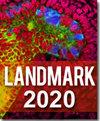Circulating Microvesicles in Convalescent Ischemic Stroke Patients: A Contributor to High-On-Treatment Residual Platelet Reactivity?
IF 3.1
4区 生物学
Q2 Immunology and Microbiology
引用次数: 2
Abstract
INTRODUCTION Exploration of novel and effective antiplatelet strategies for the secondary prevention of ischemic stroke is utmost. Some platelet derived microparticles (PMVs) in convalescent stroke subjects were found to be predictive for the next vascular event. Patients with high-on-treatment platelet reactivity (HTPR) had a significantly higher risk for ischemic stroke. Here, we aimed to explore associations among circulating microparticles and responsivness to antiplatelet (clopidogrel) therapy. METHODS A total of 18 patients on clopidogrel therapy due to secondary stroke prevention were rospectively recruited into this study. Twenty age-matched healthy subjects served as controls. Flow cytometric measurements of microparicles (MVs) and data analysis were performed on Beckman-Coulter FC-500 cytometer with CXP software. Besides, platelet aggregometry data were revealed. Both measurements were performed in whole blood and from the lower and upper blood fractions separated after 1-hour gravity sedimentation by the analogy with erythrocyte sedimentation rate. RESULTS The total number of circulating MVs, and particularly the platelet derived CD42+ and PAC-1+ were significantly higher in post-stroke patients (p < 0.001). The platelet aggregation in the whole blood (area under the curve, AUC) showed a significant negative correlation with the total number of MPs in the lower blood sample after 1-hour gravity sedimentation (r = -0.650, p = 0.005). Next, we analyzed associations among MPs and aggregometry data obtained from clopidogrel responders and non-responders. Both, area under the curve (AUC) and velocity in the whole blood showed opposite correlation with the total number of MVs in the lower blood sample after 1-hour gravity sedimentation. Importantly, a significant negative correlation was observed for the velocity (r = -0.801, p = 0.005), but not for the AUC in responders. Platelet derived CD42+ and PAC-1+ MVs showed positive correlations with neutrophils in the lower blood sample (p = 0.008 and p = 0.006 respectively). CONCLUSIONS Circulating MVs may allow to monitor the response to antiplatelet therapy in post-stroke patients. In addition, the link between platelet derived MVs and neutrophil granulocytes might become therapeutic targets in the future.恢复期缺血性卒中患者的循环微泡:治疗后残余血小板反应性高的一个因素?
探索新的有效的抗血小板策略对缺血性脑卒中的二级预防至关重要。一些血小板衍生微粒(PMVs)在恢复期中风受试者中被发现可以预测下一个血管事件。治疗时血小板反应性高(HTPR)的患者发生缺血性卒中的风险明显更高。在这里,我们的目的是探讨循环微粒与抗血小板(氯吡格雷)治疗反应性之间的关系。方法回顾性研究18例因继发性脑卒中预防而接受氯吡格雷治疗的患者。20名年龄匹配的健康受试者作为对照。在Beckman-Coulter FC-500型细胞仪上使用CXP软件进行微颗粒(MVs)的流式细胞术测量和数据分析。此外,还显示了血小板聚集数据。这两种测量都是在全血中进行的,并从1小时重力沉降后通过与红细胞沉降率的类比分离的下部和上部血液馏分。结果卒中后患者外周血mv总数,尤其是血小板来源的CD42+和PAC-1+明显升高(p < 0.001)。全血血小板聚集(曲线下面积,AUC)与重力沉降1小时后下血MPs总数呈显著负相关(r = -0.650, p = 0.005)。接下来,我们分析了从氯吡格雷应答者和无应答者中获得的MPs和聚合数据之间的关联。曲线下面积(area under the curve, AUC)和全血流速与重力沉降1h后下段血样中mv总数呈相反的相关关系。重要的是,在速度上观察到显著的负相关(r = -0.801, p = 0.005),但在应答者的AUC上没有观察到显著的负相关。血小板来源的CD42+和PAC-1+ mv与下血检中性粒细胞呈正相关(p = 0.008和p = 0.006)。结论循环MVs可监测脑卒中后患者抗血小板治疗的反应。此外,血小板衍生的mv与中性粒细胞之间的联系可能成为未来的治疗靶点。
本文章由计算机程序翻译,如有差异,请以英文原文为准。
求助全文
约1分钟内获得全文
求助全文
来源期刊

Frontiers in Bioscience-Landmark
生物-生化与分子生物学
CiteScore
3.40
自引率
3.20%
发文量
301
审稿时长
3 months
期刊介绍:
FBL is an international peer-reviewed open access journal of biological and medical science. FBL publishes state of the art advances in any discipline in the area of biology and medicine, including biochemistry and molecular biology, parasitology, virology, immunology, epidemiology, microbiology, entomology, botany, agronomy, as well as basic medicine, preventive medicine, bioinformatics and other related topics.
 求助内容:
求助内容: 应助结果提醒方式:
应助结果提醒方式:


